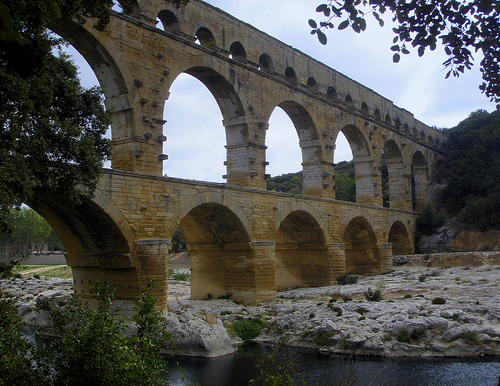|
|
|
|
|
 |
You like this picture ?
=> click on the love button |
|
|
Roman aqueduct, Provence
The aqueduct was constructed by the Romans in the first century AD and was added to UNESCO's list of World Heritage Sites in 1985. It is the highest of all Roman aqueduct bridges and is the best preserved after the Aqueduct of Segovia.
The bridge has three rows of arches, standing 48.8 m (160 ft) high, and formerly carried an estimated 200 million litres (44 million gallons) of water a day to the fountains, baths and homes of the citizens of Nîmes. The aqueduct descends in height by only 17 m (56 ft) over its entire length, indicative of the great precision that Roman engineers were able to achieve using only simple technology. It was possibly used until as late as the ninth century, well after the fall of Rome. However, lack of maintenance after the fourth century meant that it became increasingly clogged by mineral deposits and debris that eventually choked off the flow of water.
It was used as a toll bridge during the Middle Ages and became a tourist attraction from the 18th century onwards.
It has survived three bad floods, the latest in 2002, when the water reached almost to the top of the bottom row of arches, and other nearby bridges were badly damaged.

Picture uploaded by: perseverando - View this picture on Flickr
Picture taken on: september 06, 2010
Taken in: Vers-Pont-du-Gard, Gard | Provence-Alpes-Côte d'Azur - France 3590
Other pictures for this place: Vers-Pont-du-Gard    -t.jpg)            |
| |
|
|
|
|
|